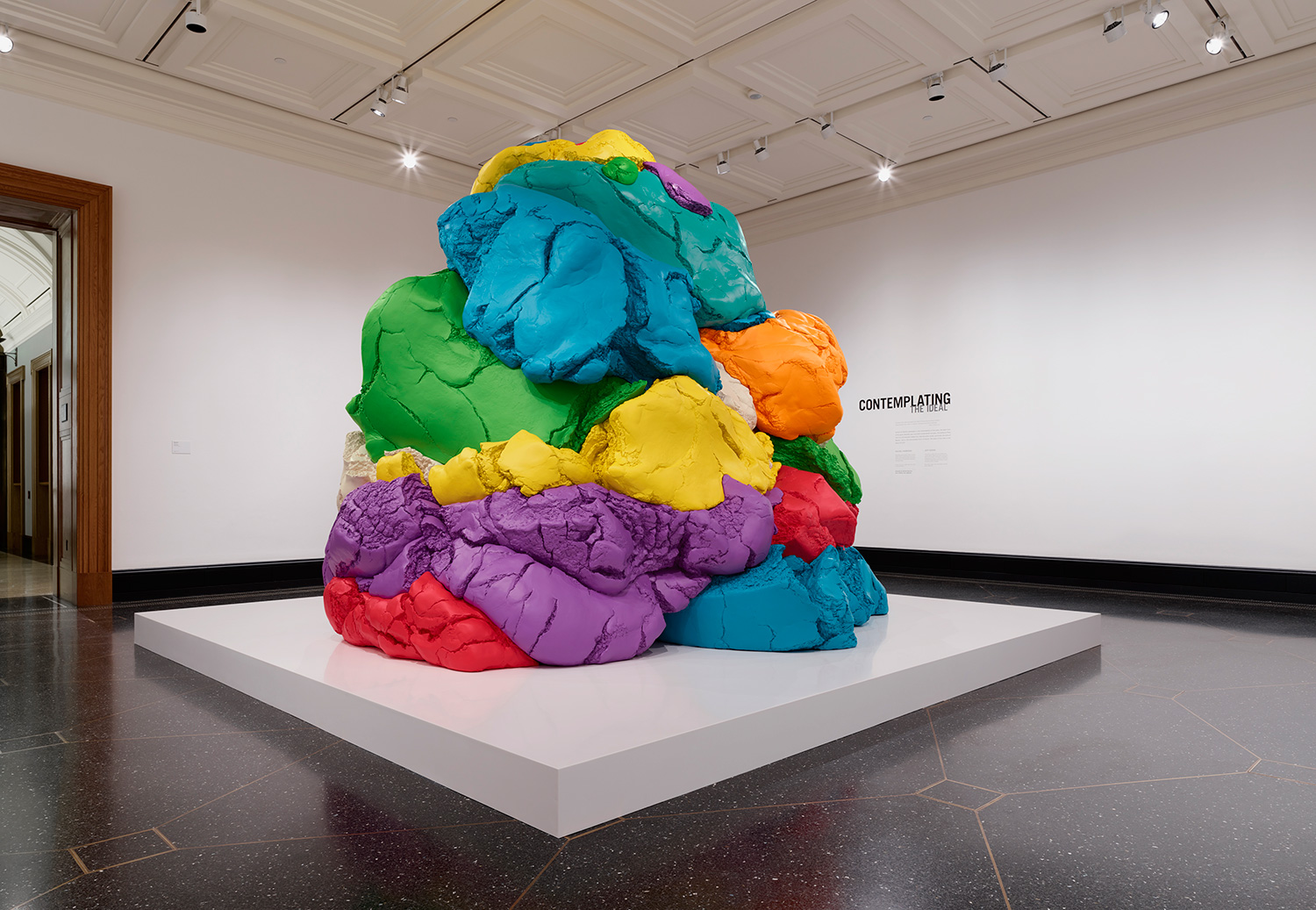The discrepancy in scale or grandiosity of effect is remarkable. To travel as far west as the Getty, descend into its voluminous garages, and rise via the stately tram to its magnificent pavilions and soaring views, for the sake of a show that has at its heart a collection of Yvonne Rainer’s personal notebooks, carefully displayed in glass vitrines!
A certain intimacy, and all the time it might swallow, is pitted against the spectacular museum, ably built to consume the span of a day. Of course, one’s main impressions of Yvonne Rainer: Dances and Films are just as the exhibition’s title suggests. Divided into two wings on either side of the Getty Research Institute’s lobby, one focuses on documentation of Rainer’s dances from the ’60s and ’70s, including the aforementioned notebooks, while the other shows all of Rainer’s films from about the same period on through her return to choreography in the 2000s, with Charles Atlas’s 2002 Rainer Variations included for good measure.
This, in other words, is quite an occasion — indeed, a much larger one than the space that houses it. To approach more than half a century of work within the space of one fairly large room and a screening booth presents an impossible task for a critic, as well as one appropriate to the particular nature of the GRI, a library within a museum. In any case, the conclusions nowhere forced by the show are further kept at bay by the fact that Rainer remains an active artist, with a specially commissioned piece, The Concept of Dust, or How do you look when there’s nothing left to move? to debut at the Getty in early October.
In response, many among the art press have chosen to highlight the amount of time they spent engaging with one feature or another of this show. Yet the admission of pleasure often implied is strange when applied to an artist who so consistently seeks to confound audience expectations. Perhaps this joy comes from how fluently Rainer’s work overflows the boundaries of the institution, addressing us on its own intractable time, for years and years to come.


